The Huawei Mate 40 Pro+ is the top-end model in the Chinese manufacturer’s premium Mate 40 line. It shares many key components with its cousin Mate 40 Pro, such as the 6.76-inch OLED display and the Kirin 9000 chipset, but there are some important differences in the camera hardware.
Like the standard Mate 40 Pro, the Plus model’s primary camera uses a 50 MP 1/1.28″ sensor coupled to a 23 mm f/1.9-aperture lens. However, the Plus adds optical image stabilization to the mix. The ultra-wide camera has been boosted as well, at least on paper. Again, both models share the same sensor (20 MP 1/1.54″), but at 14 mm, the Mate 40 Pro+ offers a noticeably wider field of view versus the 40 Pro’s 18 mm. On the flip side, users of the top-end model have to make do with a slower aperture (f/2.4 vs. f/1.8).
The most important differences arguably lie in the tele-camera setup, though. While the Mate 40 Pro uses a single tele-camera with a 5x magnification, the 40 Pro+ divides tele duties between a pair of cameras. Shorter zoom ranges are covered by a 12 MP module with an f/2.4-aperture lens and 3x magnification. For long shots, the camera switches to an 8 MP module with an f/4.4-aperture lens that reaches a 10x magnification.
The camera can capture 4K video footage at up to 60 frames per second, and 1080p video can be recorded at up to 480 frames per second for slow-motion effects.
The Huawei Mate 40 Pro+ comes with one of the most impressive camera spec sheets we have seen on a smartphone. Read on to find out how it performed in our DXOMARK Camera tests.
Key camera specifications:
- Primary: 50 MP 1/1.28″ sensor (12 MP output), 23 mm-equivalent (1x defined as 27 mm) f/1.9-aperture lens, full-pixel Octa-PD, OIS
- Ultra-wide: 20 MP 1/1.54″ sensor, 14 mm-equivalent f/2.4-aperture lens, PDAF
- Tele 1: 12 MP sensor, 70mm-equivalent f/2.4-aperture lens, PDAF, OIS
- Tele 2: 8 MP sensor, 240 mm-equivalent f/4.4-aperture lens, PDAF, OIS
- LED flash
- 4K video, 2160p/60 fps (2160p/30 fps tested)
- Multispectral color temperature sensor
- ToF 3D sensor
About DXOMARK Camera tests: For scoring and analysis in our smartphone camera reviews, DXOMARK engineers capture and evaluate over 3000 test images and more than 2.5 hours of video both in controlled lab environments and in natural indoor and outdoor scenes, using the camera’s default settings. This article is designed to highlight the most important results of our testing. For more information about the DXOMARK Camera test protocol, click here. More details on how we score smartphone cameras are available here.
Test summary
Scoring
Sub-scores and attributes included in the calculations of the global score.
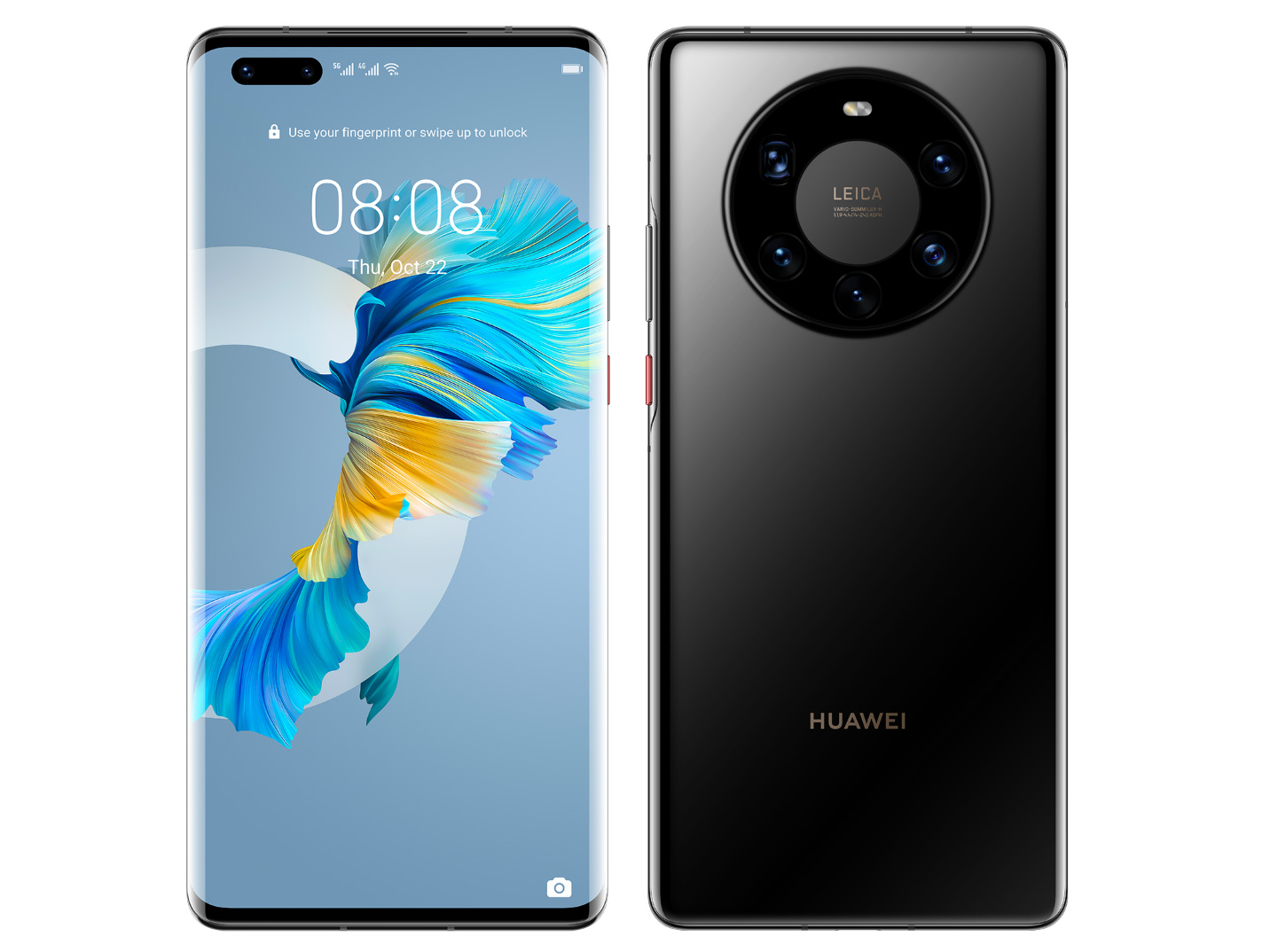
Huawei Mate 40 Pro+


Use cases & Conditions
Use case scores indicate the product performance in specific situations. They are not included in the overall score calculations.
Outdoor
Photos & videos shot in bright light conditions (≥1000 lux)
Indoor
Photos & videos shot in good lighting conditions (≥100lux)
Lowlight
Photos & videos shot in low lighting conditions (<100 lux)
Friends & Family
Portrait and group photo & videos
 38th
38th
Pros
- Wide dynamic range in all conditions
• Nice colors and good white balance in bright light and indoors
• Excellent detail in most conditions
• Fast and consistent autofocus in most situations
• Good detail and low noise levels in ultra-wide camera shots
• Excellent detail and low noise in tele shots
• Wide dynamic range and good texture/noise in night shots
• Very good texture/noise tradeoff in bright light and indoor videos
• Effective video stabilization
Cons
- Color quantization, aliasing, and ghosting artifacts
• Shallow depth of field, occasional focus failures at close range
• Preview images often significantly different from capture
• Sharpness differences between video frames, especially in low light
With a DXOMARK Camera score of 139, the Huawei Mate 40 Pro+ is the new king of cameras in our DXOMARK Camera smartphone ranking, offering excellent performance in most sub-categories. It delivers the highest Photo score (144) we have seen to date and comes a close second in both the Zoom and Video categories, making it an excellent choice for any kind of mobile imaging application.
The addition of optical image stabilization (OIS) is a wise move that ensures improved detail and lower noise compared to the standard model in most conditions, but especially in low light. Longer exposure times with lower ISOs are now possible with the aid of OIS, and the Mate 40 Pro+ sets a new benchmark for night photography in our analysis.
Mate 40 Pro+ still images generally leave very little to complain about. Exposure is excellent and the device achieves a joint top score in this category (109) alongside the Mate 40 Pro. Target exposures are generally very accurate in all conditions and the camera offers a wide dynamic range, capturing good highlight and shadow detail in high-contrast scenes. Dynamic range is particularly impressive under indoor and low-light conditions, too. Our testers observed slight exposure instabilities under indoor conditions, but that’s a minor blip in an otherwise solid performance for exposure.
The Mate 40 Pro+ achieves some excellent measurements for color in our benchmark lab tests, which helped it attain a high score in this category. In our perceptual analysis, color was generally nice and white balance is usually very accurate, except in very low light where some color casts can occur. Slight white balance instabilities are also evident over consecutive shots, but nothing too problematic. You can see in the best indoor examples that the Mate 40 Pro+ is as good if not slightly better than the iPhone 12 Pro Max, and shows noticeable improvement over the cold white balance captured on the Xiaomi Mi 10 Ultra.
Autofocus is fast and accurate and the Mate 40 Pro+ achieves close to a top score in this category, just a couple of points behind the iPhone 12 Pro Max. Many of its performance results in our benchmark tests were noticeably better than the Mate 40 Pro’s, and autofocus is very reliable even while handholding the device in very low light. Some points were dropped in the perceptual analysis, however, due to autofocus failures when shooting at very close proximity to the subject, and depth of field is fairly shallow for a smartphone. The limited depth of field does ensure a slight natural bokeh effect even in standard pictures, which is nice, but also means backgrounds or people at the back of a group are usually out of focus.
The Mate 40 Pro+ boasts close to the top score for texture, with a high level of detail captured in most conditions. Performance is very close to that of the standard Mate 40 Pro, but the + model is slightly better both indoors and in low light. Its texture rendering isn’t as good as the Xiaomi Mi 10 Ultra in low light, but better detail on moving subjects helped the Mate 40 Pro+ achieve a fractionally better texture score compared to the Xiaomi overall. That said, some motion blur is still visible in some Mate 40 Pro+ shots and slightly unnatural rendering of skin textures is evident, too. The Mate 40 Pro+ isn’t among the very best for noise either, but still delivers very good results and maintains an excellent texture/noise tradeoff overall.
Switch to Portrait mode and the Mate 40 Pro+ is also one of the best devices we’ve tested for bokeh simulation. Depth estimation is fairly accurate, with a natural-looking blur gradient effect in both the foreground and background, and first-class color rendering. The texture-versus-noise tradeoff is also better than many high-end competitors, with similar results to the Mate 40 Pro in this regard. Overall, the Mate 40 Pro+’s performance isn’t quite as consistent as some other top devices for bokeh, however, with a difference in rendering sometimes evident across consecutive shots; but in the best examples, the overall quality is very high.
The Mate 40 Pro+ is outstanding for night shots, achieving the highest score in this category by some distance. Again, OIS brings a lot to the party in this area as the device can increase the exposure time and reduce the ISO to enhance the photon flow and improve the signal-to-noise ratio and exposure. So with the flash turned off, texture and noise are well balanced and dynamic range remains wide down to very low light, which is something that most rivals struggle with. Occasional unnatural texture rendering makes images look a little like an oil painting, but generally you won’t have too many complaints about shooting nightscapes on the Mate 40 Pro+. Capturing night portraits in flash-auto mode, the flash fires accurately when a subject is detected and overall the image quality remains very high. Target exposure on the subject is accurate and wide dynamic range ensures shadows and highlights in the background are also nicely exposed. In the comparison below, the Mate 40 Pro+ offers a nicer flash exposure and much better detail compared to the Mi 10 Ultra. Arguably exposure isn’t quite as good on the iPhone 12 Pro Max, with the Apple device capturing a lower target exposure on the subject with some highlight clipping in the background. That said, the high saturation and bright background on the Apple shot does ensure a striking result.


Preview is one of the areas where the camera still has room for improvement, and the Mate 40 Pro+ is close to the bottom of the ranking for this category. The lack of live HDR processing means the preview image often fails to give you an accurate impression of the final exposure, which is especially true in all situations where there are extremes of brightness. Bokeh rendering in preview is actually quite good—which isn’t often the case on many devices— but for standard shots it’s hard to judge what the final image will look like from what you see on-screen. The smoothness and stability of the preview image while pinch-zooming also leaves significant room for improvement, with very obvious jumps in exposure, focus, and framing visible as the device transitions between the different camera modules.
Global control of artifacts is another weakness for the Mate 40 Pro+. Color quantization is often visible on both dark areas and faces, as well as some ghosting on moving objects. Some fusion artifacts are occasionally visible, too, but the overall impact from this is less significant compared to the color quantization, which is quite strong compared to other top-ranked devices in our database.
Our Zoom score comprises a device’s ultra-wide and tele-lens scores, and with excellent results for both, the Mate 40 Pro+ chalks up our second-highest Zoom score to date at 98.
Its ultra-wide score of 53 is only bettered by the Xiaomi Mi 10 Ultra, and overall, the 14 mm ultra-wide camera on the Mate 40 Pro+ offers excellent image quality with nice exposures, wide dynamic range, pleasant color rendering, and a good texture-vs-noise compromise. Huawei is the first to use free-form lenses in its ultra-wide cameras, which allow for some optical control of distortion. Currently its competitors have to rely on software to correct this distortion, which can impact the effective focal length we measure, but the Mate 40 Pro+ free-form lens manages to keep vertical lines nice and straight without altering the focal length too much.
Ultra-wide shots aren’t perfect, with slight yellow color casts occasionally visible, some unnatural texture rendering in intricate areas, as well as some white balance and exposure instabilities in low light, but these are small quibbles about an otherwise excellent performance. Noise is also better on the Mate 40 Pro+’s wide shots compared to the Mi 10 Ultra, but with the Xiaomi device opting for stronger denoising and more natural-looking texture, improved white balance consistency, and (crucially) a wider 12 mm field of view, the Mi 10 Ultra just gets the nod for top spot in our ultra-wide camera analysis.
Thanks to a double telephoto configuration, the Mate 40 Pro+’s performance improves noticeably over the standard model in the tele category. Again ranking second with a tele score of 129, overall performance is close to that of the category leader, the Xiaomi Mi 10 Ultra, with very good exposure, dynamic range, detail, and noise control. In fact, the Huawei is actually slightly better than the Xiaomi at close and medium range, thanks to some very efficient computational photography algorithms. Combining images from the main and shorter tele-lens cameras at medium range, and using OIS from the main camera for super-resolution images at close range, the Mate 40 Pro+ achieves very high-quality images and top scores at these shorter zoom distances.
It’s not quite as good in our long-range zoom analysis, however, and while overall image quality remains good, there are a few niggles to be aware of. The 240 mm-equivalent second tele-lens provides a high level of detail at 10x zoom, which is great when you need to zoom in that much, but it’s a bit of a rarity on a smartphone. Drop the magnification to a more usable 170 to 200 mm-equivalent range where the second tele-lens isn’t fully activated, and some problems start to arise. Detail remains good in the center, but fusion artifacts with unnatural texture rendering are obvious in the outer field in landscape or architectural images. Fusion processing isn’t applied in long-range portraits, though, so texture rendering is more consistent across the frame, but overall detail is slightly lower than the top performers on these type of images. Autofocus on the long tele module is a point of criticism, too, with slow reaction times often resulting in instabilities. This said, if you give it the time it needs, the long tele does deliver accurate focus.
The comparison below illustrates some of the pros and cons at long range. Details are very well preserved at the center but not towards the edges, where a strong difference in texture rendering looks unnatural. In comparison, the standard Mate 40 Pro and the Mi 10 Ultra offer less detail in the center but more consistent results across the entire image.
The Mate 40 Pro+’s Video score of 115 is only one point shy of the current video top score held by the Mate 40 Pro, thanks to excellent results in all test areas. Target exposure is mostly accurate in indoor and outdoor videos, and dynamic range is reasonably good in most static videos, although shadow and highlight clipping is evident in very challenging high-contrast lighting conditions. The video exposure strategy is generally similar to the standard Mate 40 Pro’s. There are some minor differences, with the Mate 40 Pro+ rendering slightly better dynamic range in some scenes—but with more obvious steps in exposure adaptation visible, too. Dynamic range tends to be more extended in the Mate 40 Pro+’s static videos, too, so there is some need to improve HDR rendering consistency across all videos.
White balance is fairly neutral in most videos and relatively stable in outdoor and indoor scenes. It’s a little less consistent in low light, where changes in the color matrix and white balance instabilities do creep in, but unless you’re recording a lot in very low light, it isn’t a problem. Color rendering is pleasant generally, although it could be a bit better in portraits, where reddish skin tones are often visible (which explains why the Mate 40 Pro+’s video color score is fractionally lower than the Mate 40 Pro’s).
Like with stills, the texture-to-noise tradeoff is good in outdoor and indoor videos. Texture rendering isn’t quite as good as the standard Mate 40 Pro’s, particularly in portraits, where texture and skin tones aren’t rendered quite as nicely. As for video exposure, the Mate 40 Pro+ also tends to behave slightly differently in static and moving videos, with more obvious loss of detail in videos captured while moving. It lost the most points for video texture in our perceptual analysis of low-light videos, however, so again, seeking out better light will help improve overall quality.
In our objective measurements, noise control on the Mate 40 Pro+ is on par with its key competitors in all lighting conditions. Again, it’s better in brighter light, with coarse noise occasionally visible in flat areas in low-light videos. Noise control is better in static low-light videos, where the device can perform frame stacking to improve image quality, but noise tends to increase in moving videos and this leads to noticeable differences in image quality throughout the video.
Video autofocus is generally fast and accurate, and stabilization is efficient, with particularly good motion control on static videos. Stabilization remains effective on handheld videos captured while walking or running, too, and overall stabilization performance is very close to that of the standard Mate 40 Pro.
Conclusion
The Huawei Mate 40 Pro+ is a premium device in every sense and deservedly takes the stop spot in our DXOMARK Camera ranking. In many areas its results are similarly excellent to those of the Mate 40 Pro, but the Plus model’s improved tele and ultra-wide cameras will make a difference to those photographers who like to vary focal lengths from very wide to very long. The addition of optical image stabilization on the primary camera also helps improve the texture/noise tradeoff as well as close-range tele results. Video quality is equally good, making the Huawei flagship an easy buy if you’ve got the cash.
Pros
• Wide dynamic range in all conditions
• Nice colors and good white balance in bright light and indoors
• Excellent detail in most conditions
• Fast and consistent autofocus in most situations
• Good detail and low noise levels in ultra-wide camera shots
• Excellent detail and low noise in tele shots
• Wide dynamic range and good texture/noise in night shots
• Very good texture/noise tradeoff in bright light and indoor videos
• Effective video stabilization


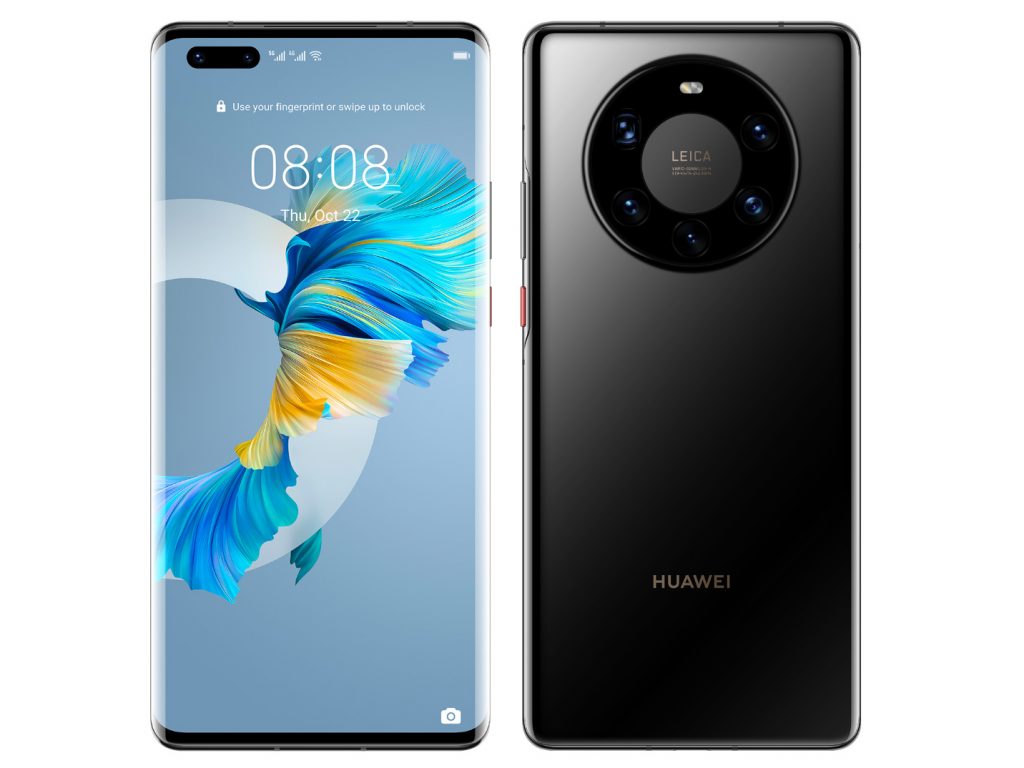

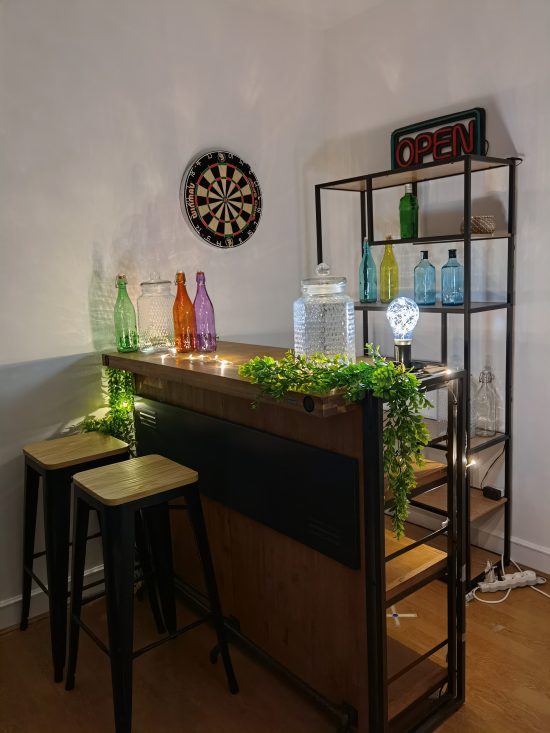


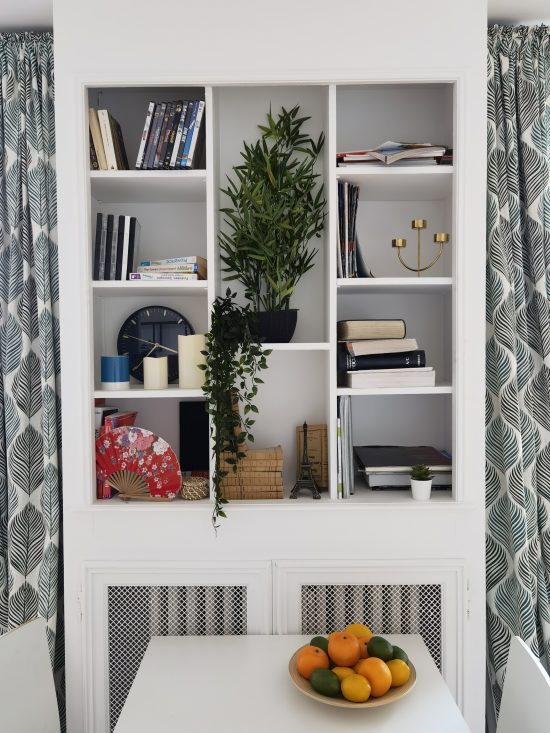

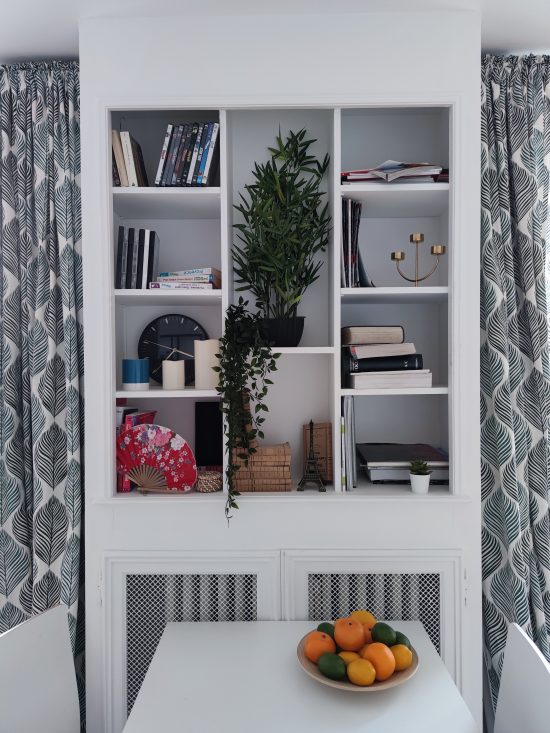
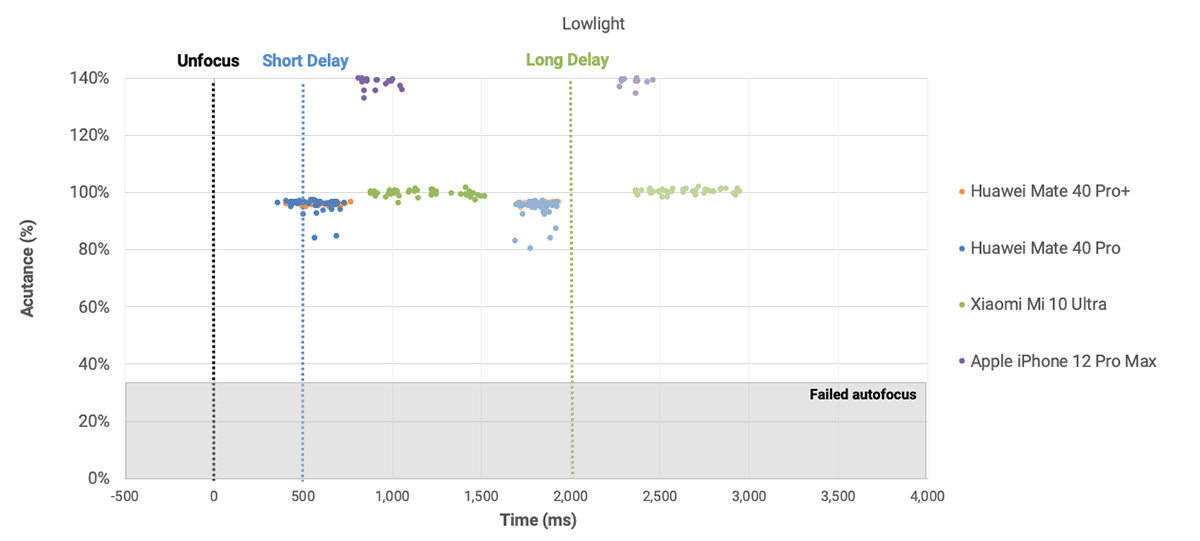







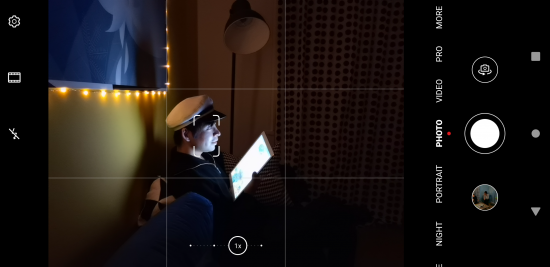
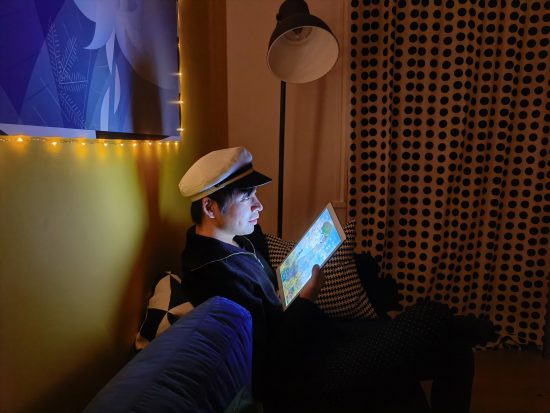


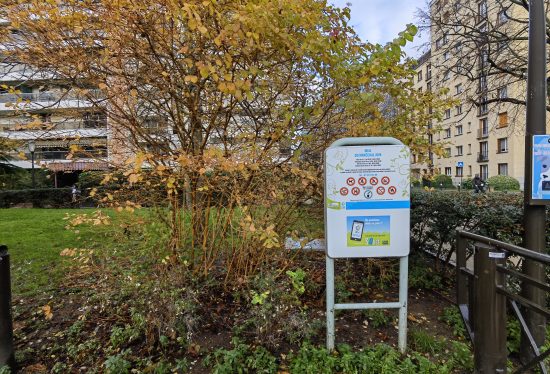




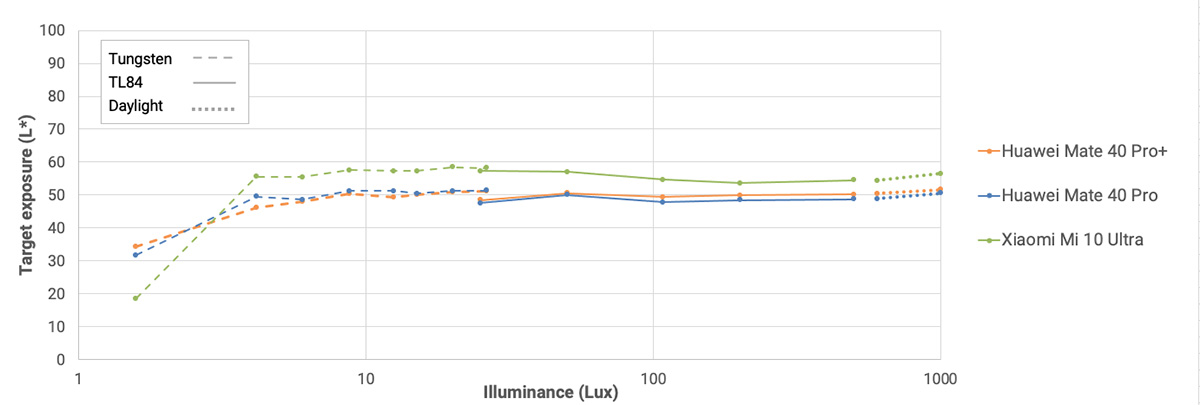
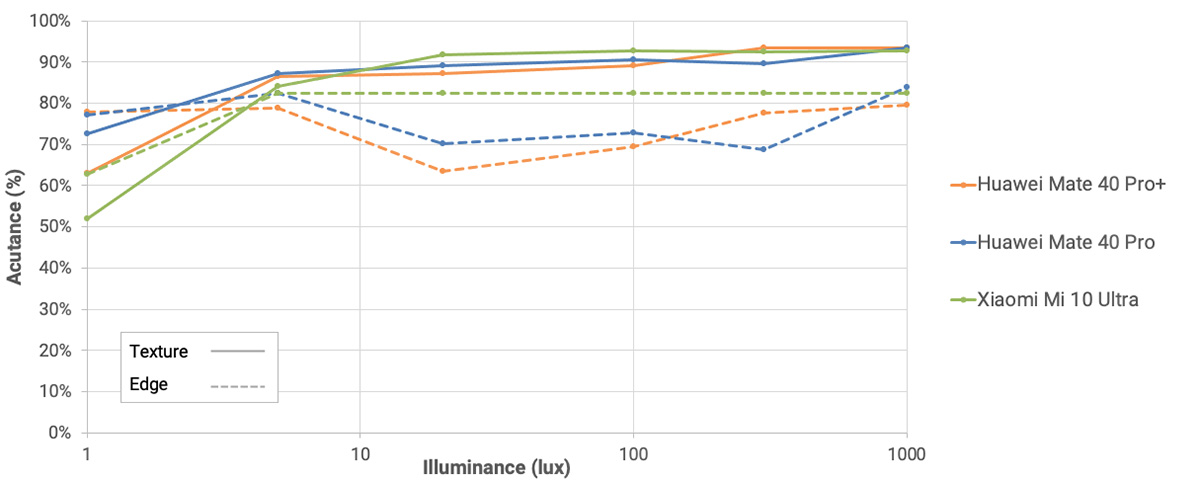

DXOMARK encourages its readers to share comments on the articles. To read or post comments, Disqus cookies are required. Change your Cookies Preferences and read more about our Comment Policy.